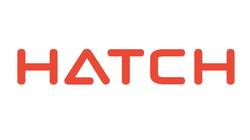Innovative defect elimination process for asset strategy development
| Innovative defect elimination process for asset strategy development | 17.83 KB | Download | |
| Hatch Gateway_The process is designed to identify the root cause of defects in machinery before it happens | 1.13 MB | Download | |
| The Gateway system is used on machinery across different industries, including mining, iron and steel making, steel and aluminiu | 1.2 MB | Download |
A holistic view to developing asset strategy using defect illumination thinking, can produce actions that, when implemented, can lead to sustained improvement. Hatch global director: operational services and Hatch Gateway strategy process developer, Dr. Nik Nikolovski says that the best improvement results are achieved with participation of cross functional and integrated teams.
Nikolovski explains that the Gateway system is used on machinery across different industries, including: mining, iron and steel making, steel and aluminium processing, and energy generation.
“An increasing number of our clients are grasping the concept of the Gateway process since it was developed in 2004. The process is designed to identify the root cause of defects in machinery before it happens. This ultimately leads to an increase in overall asset performance and a reduction in operating costs, all the while, maintaining high safety standards,” he explains.
Nikolovski explains that Hatch developed the Gateway process to assist businesses in addressing their demand for a marked improvement in production and manufacture process performance by eliminating defects before they develop into visible onset faults.
Asset strategy development using holistic defect elimination principles ensures that the equipment reliability code is protected for its entire lifecycle. This code determines everything from the functioning of the machine, to its performance and lifecycle. Provided this code is protected, the equipment should function as it was designed for the entire design lifecycle.
Gateways
Equipment rarely achieves its designed operating state for the entirety of its lifecycle, as defects have typically been able to enter the equipment though one of the four main gateways:
Maintenance: Simple decisions such as not using certified parts for repairs or not taking care in maintenance practices and procedures, can easily lead to defects.
Environmental: It is important to take into account all changes introduced by the environment, as these defects may include, for example, an increase in the moisture surrounding equipment, which could lead to corrosion or contamination.
Operational: These defects are typically introduced through the incorrect use of the machine and by not adhering to the procedures required by the original design of the equipment.
External linkages: These can include an organisation’s purchasing department buying spare parts for the machinery that are not of superior quality as demanded from the original installations. These defects could also be introduced by selecting repair shops that do not have the right skills, knowledge or equipment to service machinery in its original state. Another example would be the use of lubrication or hydraulic oil that is not filtered correctly or contains unwanted particles.
Online Web Based Knowledge Capture and Use
Each Gateway process that Hatch implements is documented in Hatch’s web-based eGateway software for the purpose of traceability in decision-making, thereby preventing the reinvention of solutions whenever there is a change in personnel. This also acts as a live asset strategy document that can be modified and improved when new knowledge and evidence becomes available.
“Recording the strategy development process also enables us to perform statistical analysis, which provides new insight into understanding the defects, what the root causes are and the relevant actions to eliminate these defects. This knowledge is then shared globally,” says Nikolovski.
Overall, Nikolovski notes that it is only through the true understanding of root causes and the various ways in which defects can enter a process, as well as developing and implementing appropriate actions, that sustainable improvement in asset performance and superior business results can be achieved.
Ends
Notes to the Editor
There are numerous photographs specific to this press release. Please visit http://media.ngage.co.za and click on the Hatch link.
About Hatch
Hatch supplies process and business consulting, information technology, engineering, and project and construction management and operational services to the mining, metallurgical, energy and infrastructure industries.
Hatch Contact
Rashree Maharaj
Hatch Marketing and Communications Manager
Phone: 011 239 5300
Email: RMaharaj [at] hatch [dot] co [dot] za
Web: www.hatch.co.za
Media Contact
Mary-Anne O’ Donnell
NGAGE Public Relations
Phone: (011) 867-7763
Fax: 086 512 3352
Cell: 072 780 2675
Email: mary-anne [at] ngage [dot] co [dot] za
Web: www.ngage.co.za
Browse the Ngage Media Zone for more client press releases and photographs at http://media.ngage.co.za

